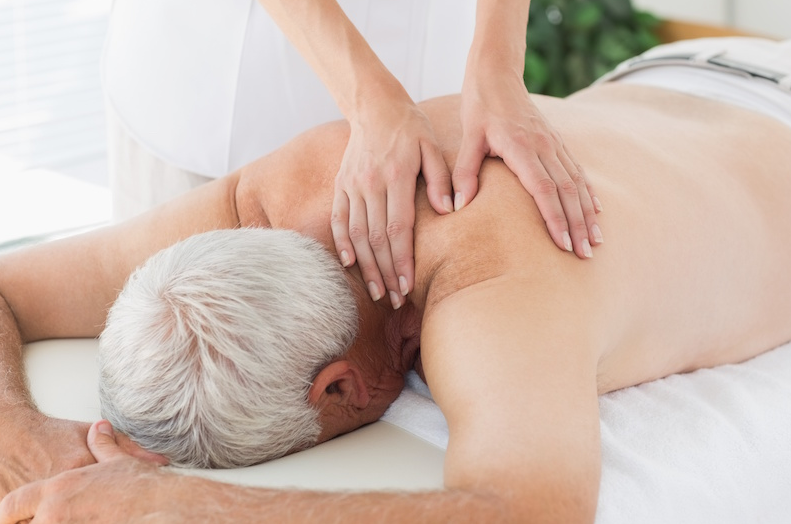Massage careers come many shapes and sizes, but all massage therapists have one thing in common: compassion. Therapists are healers first and foremost, and an empathetic heart is a prerequisite for this kind of work. In our youth-centric culture it is easy to overlook seniors, a population that definitely needs massage. After a lifetime of work, many seniors are better able to afford massage. Portland therapists who choose to work with seniors will find this work to be enriching personally and professionally. Let’s take a look at the many benefits of massage for seniors. Later, we’ll look at a couple things you can do to cater your massage practice to a more mature population.
Benefits of Massage for Seniors
Improved circulation and flexibility through massage are major benefits for seniors who receive massage. Moreover, massage can help soothe the symptoms of many geriatric chronic conditions such as arthritis, diabetes, and COPD, according to Ann Caitlin, OTR, LMT, occupational and massage therapist in eldercare. Let’s take a closer look at some of the ways that massage therapy can benefit seniors.
Alleviate Chronic Pain. As the American Massage Therapy Association highlights, massage therapy has been shown to successfully treat chronic pain, particularly in the joints.
Suffer Fewer Falls.
Massage therapy can improve balance and posture, as Jo Ellen Sefton, Director of the Neuromechanics Research Laboratory at Auburn University, points out. According to Sefton, research “suggests that regular massage may produce physiological changes that contribute to improved balance and postural control. This may be a way to decrease falls in older adults.”
Fight Osteoarthritis. A massage study conducted in Washington found that 57% of those diagnosed with Osteoarthritis have used massage therapy in the last five months, surpassing those who turned to chiropractic care (21%) and supplements and over-the-counter medications (17%). Another study conducted by Perlman et al. found that Osteoarthritis sufferers who received massage enjoyed a 23 point improvement in pain, 21 point improvement for stiffness, and 20.5 point improvement in physical function.
Offset Dementia. As in many areas of study, research on massage for dementia is limited to small sample sizes and too few control groups. Still, the studies that have been conducted on massage for dementia suggest that massage can help reduce verbal aggression as well as agitated behaviors.
Overall, massage therapy can improve quality of life for seniors. It’s no wonder, then, that 74% of hospices employ massage therapists.
Tips for Massage Therapists who Want to Cater to Seniors
First off, if you’re thinking of tailoring your massage therapy practice for senior clients, we must congratulate you on your savvy business sense. As the elderly comprise a large portion of the population, you will likely find plenty of demand for your senior-centric massage services. From a sheer numbers perspective, the Baby Boomers are impressive. The US Center for Disease Control and Prevention predicts that the number of US residents over 65 years of age will double, from 35 million to 71 million, by the year 2030. That means a steady stream of potential massage clients for the next decade.
Selena Belisle, instructor and senior massage educator at the CE Institute, recommends the following adjustments for providing massage therapy for seniors:
- Choose Top-Shelf Moisturizers. As skin ages it can become thin, itchy, and wrinkled. Your senior clients will appreciate high-quality moisturizers, such as those that include shea butter and organic ingredients. Your work will moisturize the areas where seniors cannot reach, such as their backs.
- Offer Multiple Massage Positions. Getting onto the massage table may not be easy for some seniors. What’s more, staying on the table for more than 30 minutes may not be comfortable. Therefore, communicate with your senior clients about what is working during the session, and slow down the process of preparing for the massage. You may offer seated massage instead, for instance. It is wise to offer assistance in getting on the table. Gather clients’ eyewear before ending the session, and ensure that your massage room is well lit and easy to navigate.
- Individualize Treatment. This should go without saying, but it is especially applicable to seniors. This population may see massage as a lower-cost option for non-emergency health concerns, such as loss of range of motion. Belisle explains, “My geriatric clients understand the value of having the same therapist work on them repeatedly. We can see when a joint has lost range of motion and work on that loss.” Remember that each senior client will have his or her own concerns, and that you can earn more consistent bookings by carefully tuning into the needs and concerns of the person in front of you.
- Stay Sharp with Ongoing Education. Senior-focused massage therapy education zooms in on marketing to nursing homes and extended care facilities; medication/massage interactions; massaging wheelchair- and bed-bound patients; and medical conditions common among seniors, such as Parkinson’s disease and stroke. Recognize that the more time you invest in educating yourself on senior massage, the more senior clients will respond to your treatments.
For more tips on working with elderly clients, check out our post “Client Populations: Working with Elderly Patients.” We also recommend that you stay in-the-know about East West College’s continuing education offerings.
An ever-rotating cornucopia of learning opportunities await for you at our Portland continuing massage education site. Currently, our “Introduction to Bowenwork” class would be ideal for anyone looking to enrich their massage practice for all ages, including seniors. Our Portland massage therapy school also offers in-depth ongoing education on specific anatomical areas, such as the hips or the ribs; this sort of knowledge will benefit your work with clients of all ages.




